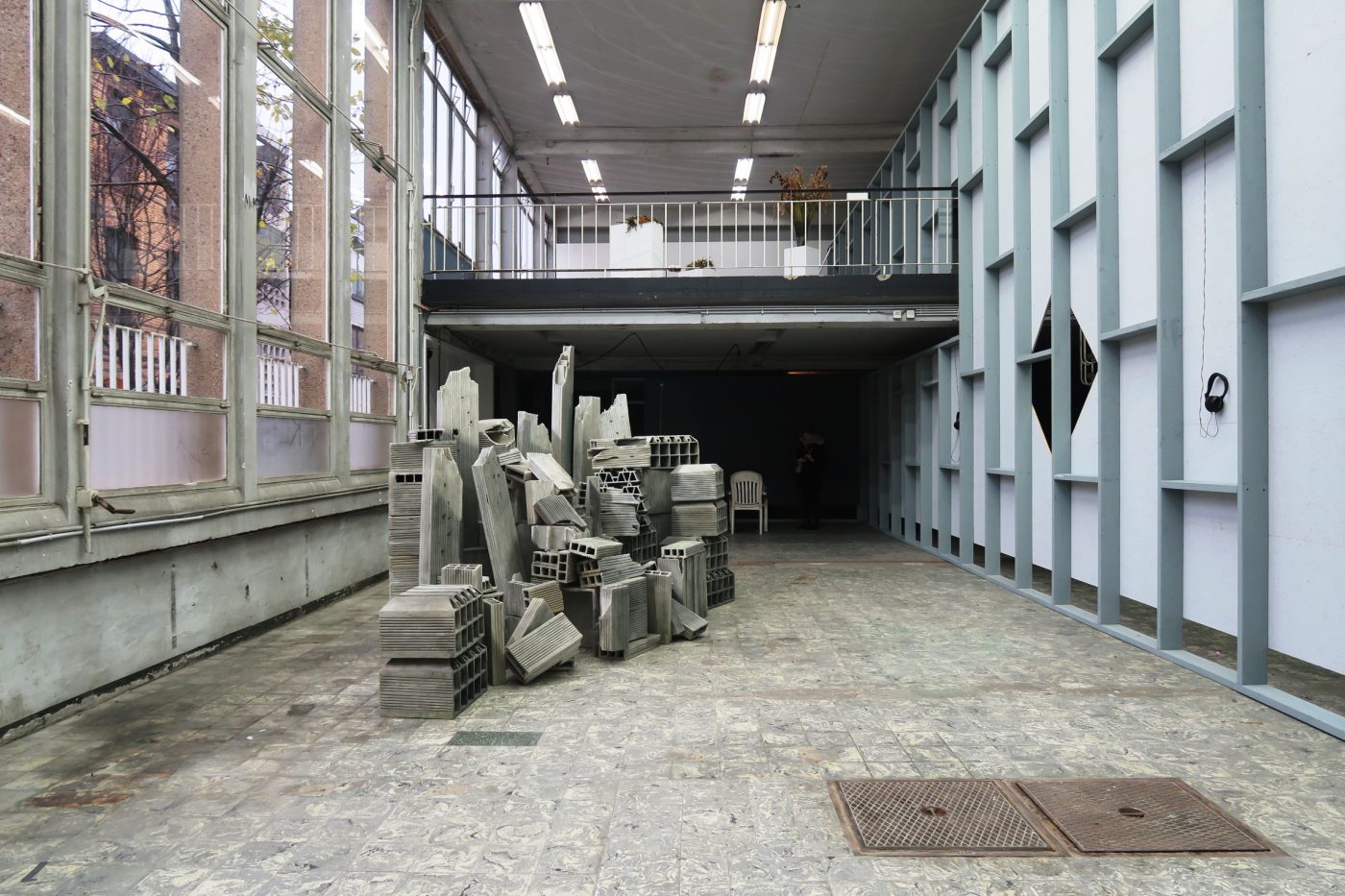
Sensing the State
How to phrase our relation with the state and extra-state organs? Extra City continues its discussion of citizenship with Extra States: Nations in Liquidation. The exhibition shows that feelings are important tools in thinking about the state and what lies beyond.
Whoever visits the group exhibition Extra States: Nations in Liquidation in Kunsthal Extra City in Antwerp is faced with a challenge. One, I would say, that necessarily also the curator of the exhibition, iLiana Fokianaki, faced, and that concerns immense complexity: How to get one’s head around the many forms of power in and beyond the state, and their futures? And how do they concern me as a visitor?
For a moment, I am caught off guard when passing the art space’s display windows alongside the street. Be it in straightforward, Dutch sentences, as a passer-by I am unexpectedly asked to phrase my relationship with the state – something seemingly at odds with the everydayness that the quiet street transmits. Nevertheless, I realize that the state is very close, as also recent power cuts in certain parts of Belgium have shown. The illusion of the state as a constant given became apparent. Treating different people differently, the state does in fact penetrate the most intimate spheres of everyone’s everyday life.
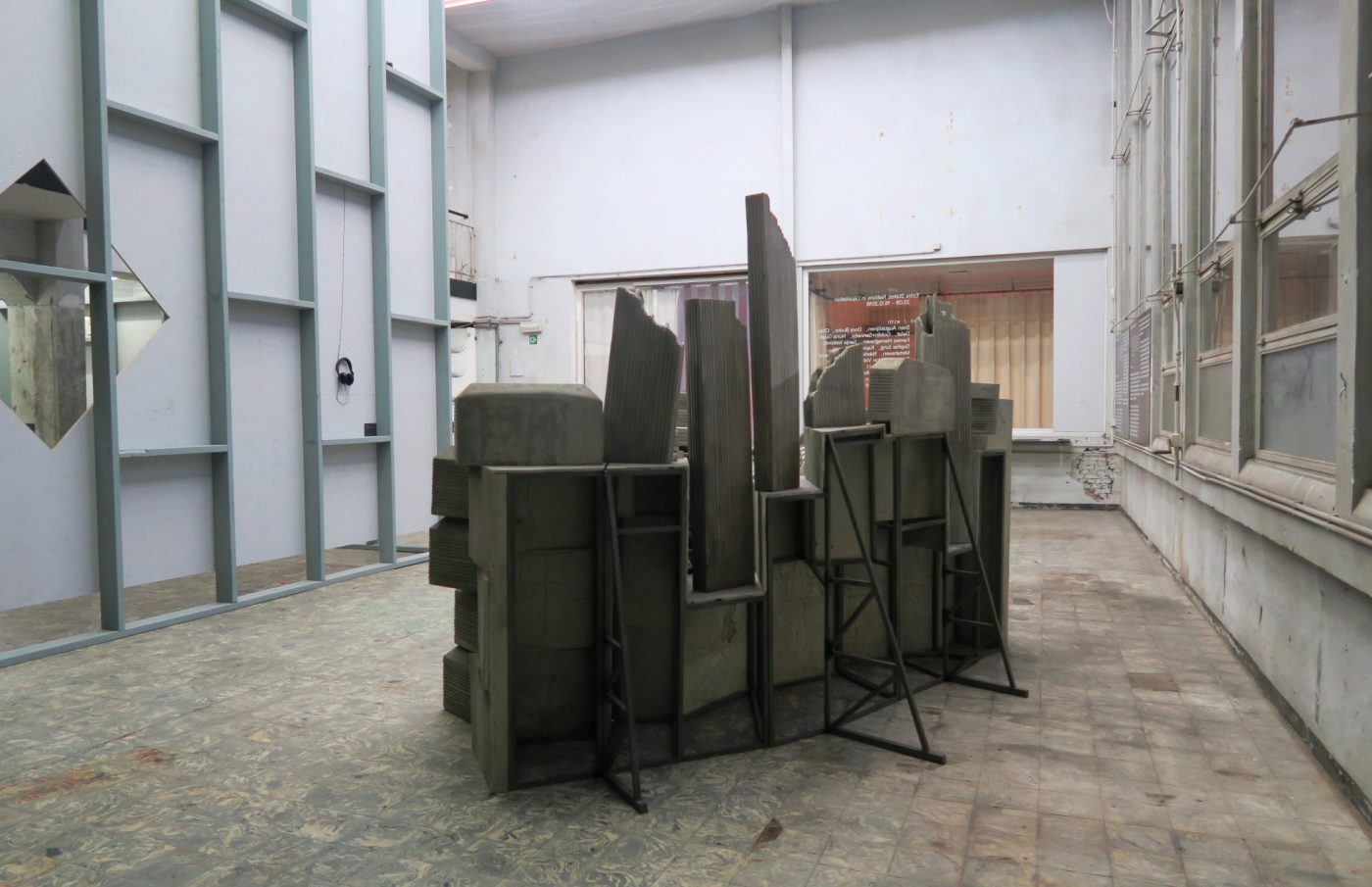
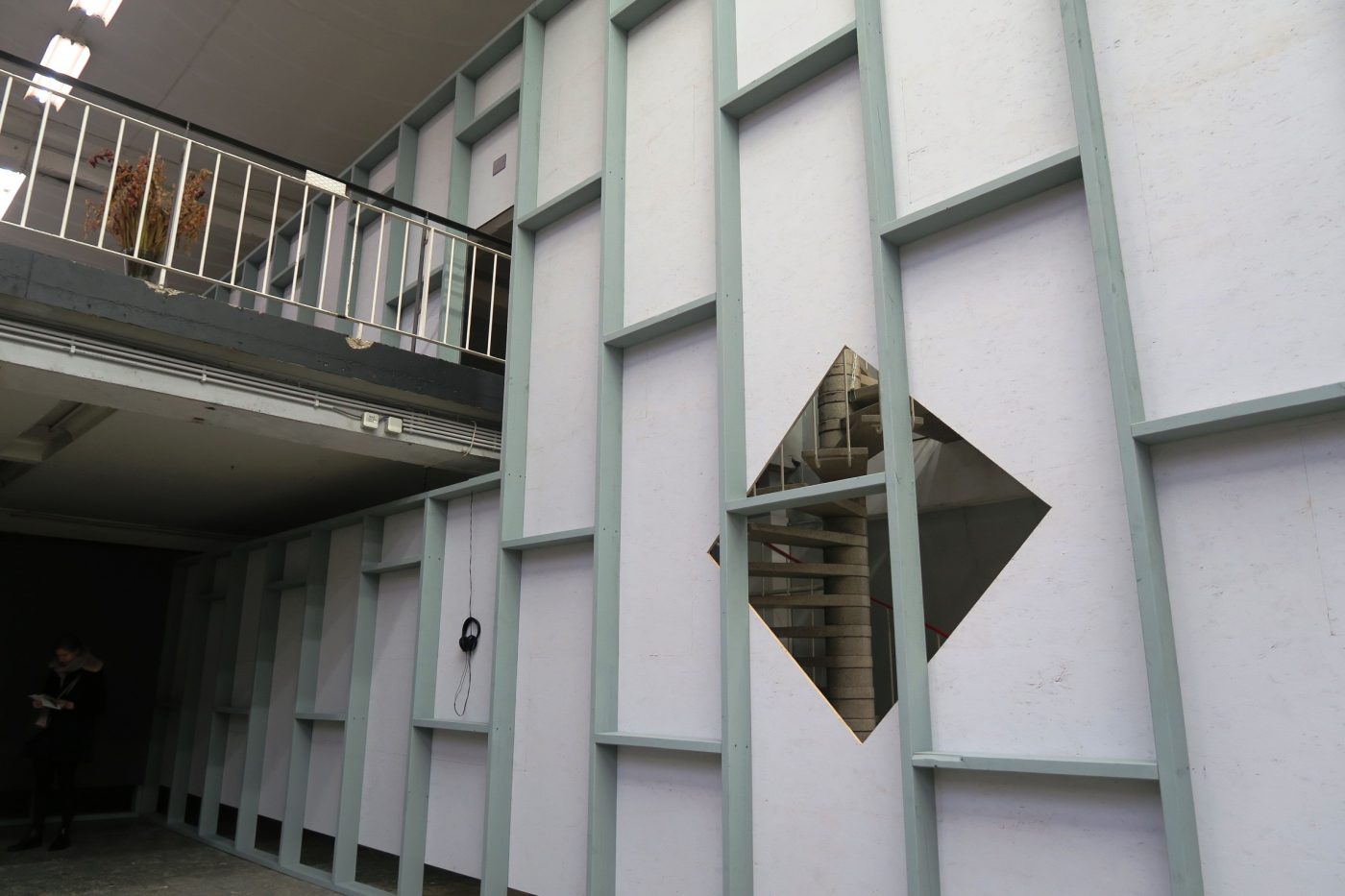

The second window, where the exhibition is taken into the street, speculates on the kind of feelings that one develops in relation to the state. A panel by artist-designers Metahaven in flashy colours is on display. Familiarity is evoked by suggesting that it concerns a Suske & Wiske book cover; the iconic Belgian comic series that thrives on everyday Flemish normalcy, reinforced by exotic adventures. Here, however, the panel reads: ‘Extra City. Beyond Belgium’, which transforms fiction into reality, and stresses the paradox between the familiar and the foreign.
Inside the building, many works are on show. My first impression, however, is that of a rather empty space. Is that a conscious decision in order to magnify the felt disconnect between state and subject? Possibly yes, because I am looking at a wall that runs through the entire exhibition, creating closed-off spaces where various works are on show. The wall is a commissioned piece, called extra muur (‘muur’ is Dutch for wall) by Olivier Goethals. In fact, it does the necessary work of putting centre stage a tangible, real object to which the visitor can relate when venturing into abstract instances of state and extra-state operations, while simultaneously it doesn’t betray its film set-like properties.
In a shadowy corner, behind the far end of the wall, Trevor Paglen’s photographs of intelligence infrastructure draw attention to the murky secret business of the USA that undermine its democratic legitimacy. Elsewhere, under bright light and in a colourful inner space, remarkable trade deals in (former) colonial property are disentangled and beautifully displayed by Femke Herregraven. The work’s placing simultaneously questions the eventual tenability of the ‘within’ of a nation-state, and thus destabilizes the meaning of the solid wall. This destabilization is taken further by the diamond-shaped window-cut in the wall, that renders the ‘outside’ visible –as well as the only work that is presented close to the entrance: Dora Budor’s Temps Mort. Budor’s work stands midway between a pile of concrete building blocks and a scale model of a shelled city. Like the wall, it has stage prop qualities, and seen through the window, both engage in an intricate dialogue.
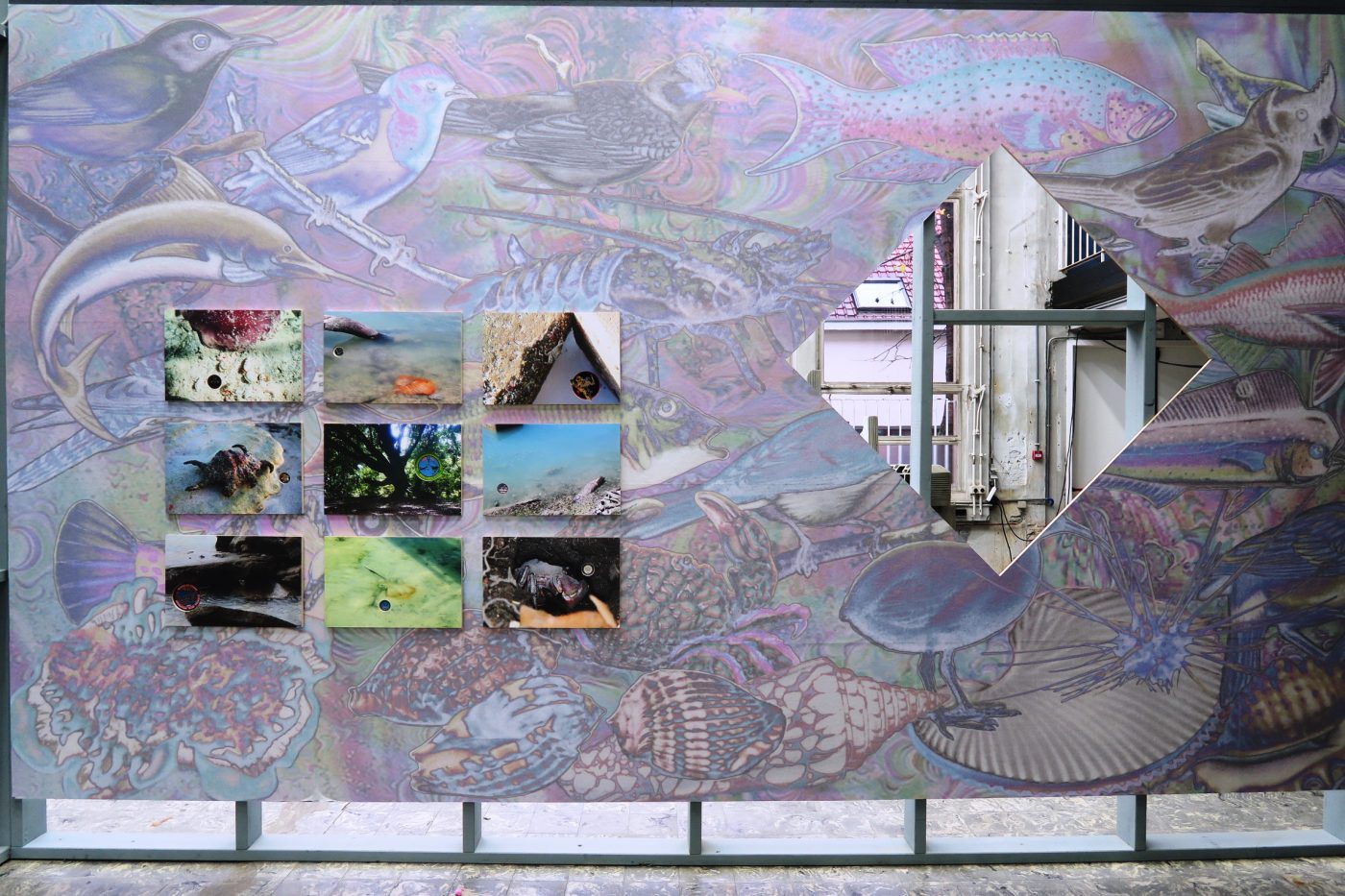

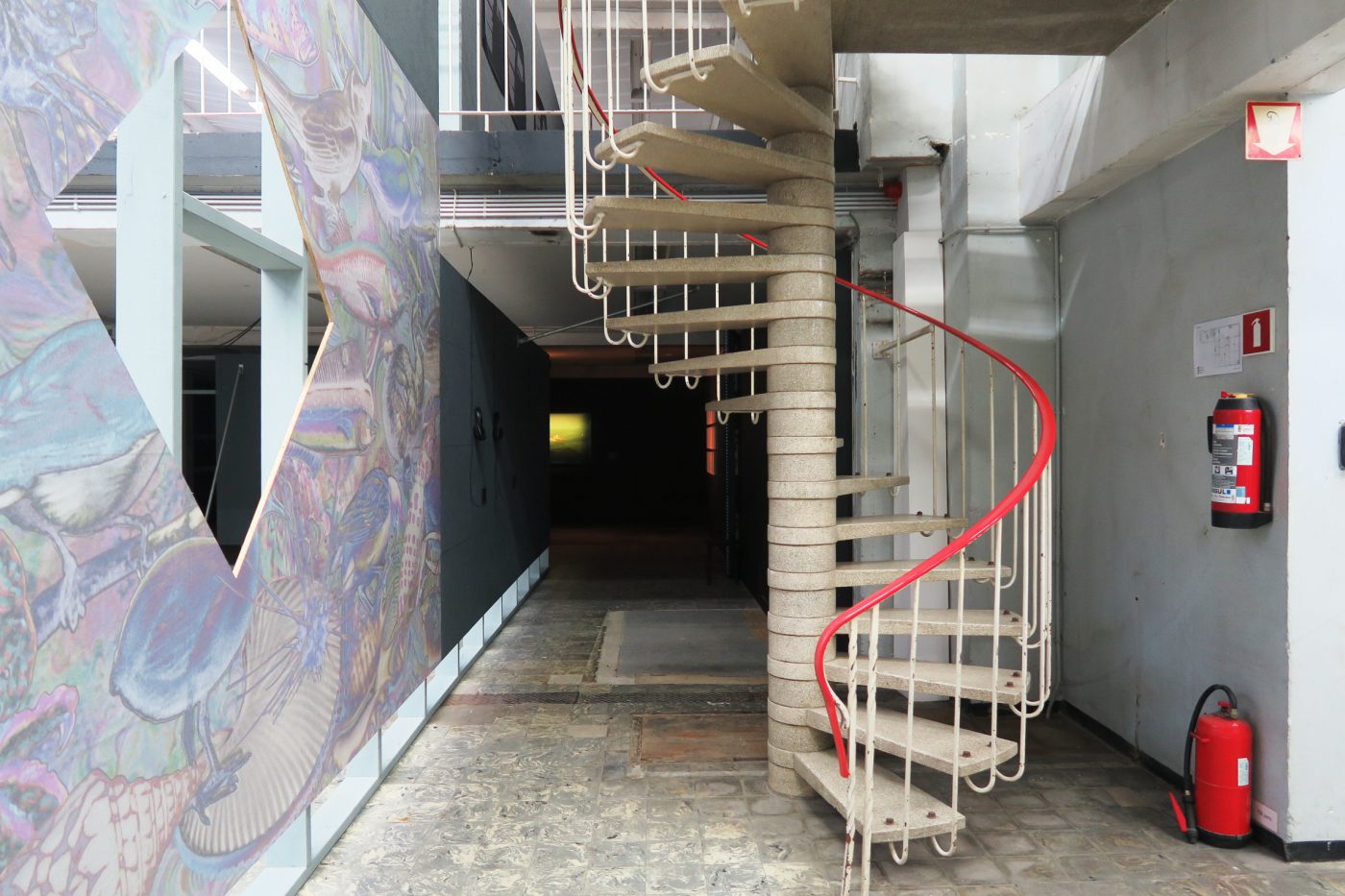
While choosing for a rather analytical approach in the paralleling Cahier, in the exhibition itself curator iLiana Fokianaki successfully brings the affective and intimate aspects of state and power constellations to the fore. No unilineal narrative is presented, and the topic remains complex. Nevertheless, for those willing to engage, the exhibition sensitizes the visitor to a troubling complex, but also helps thinking of pathways that may lead out of it.
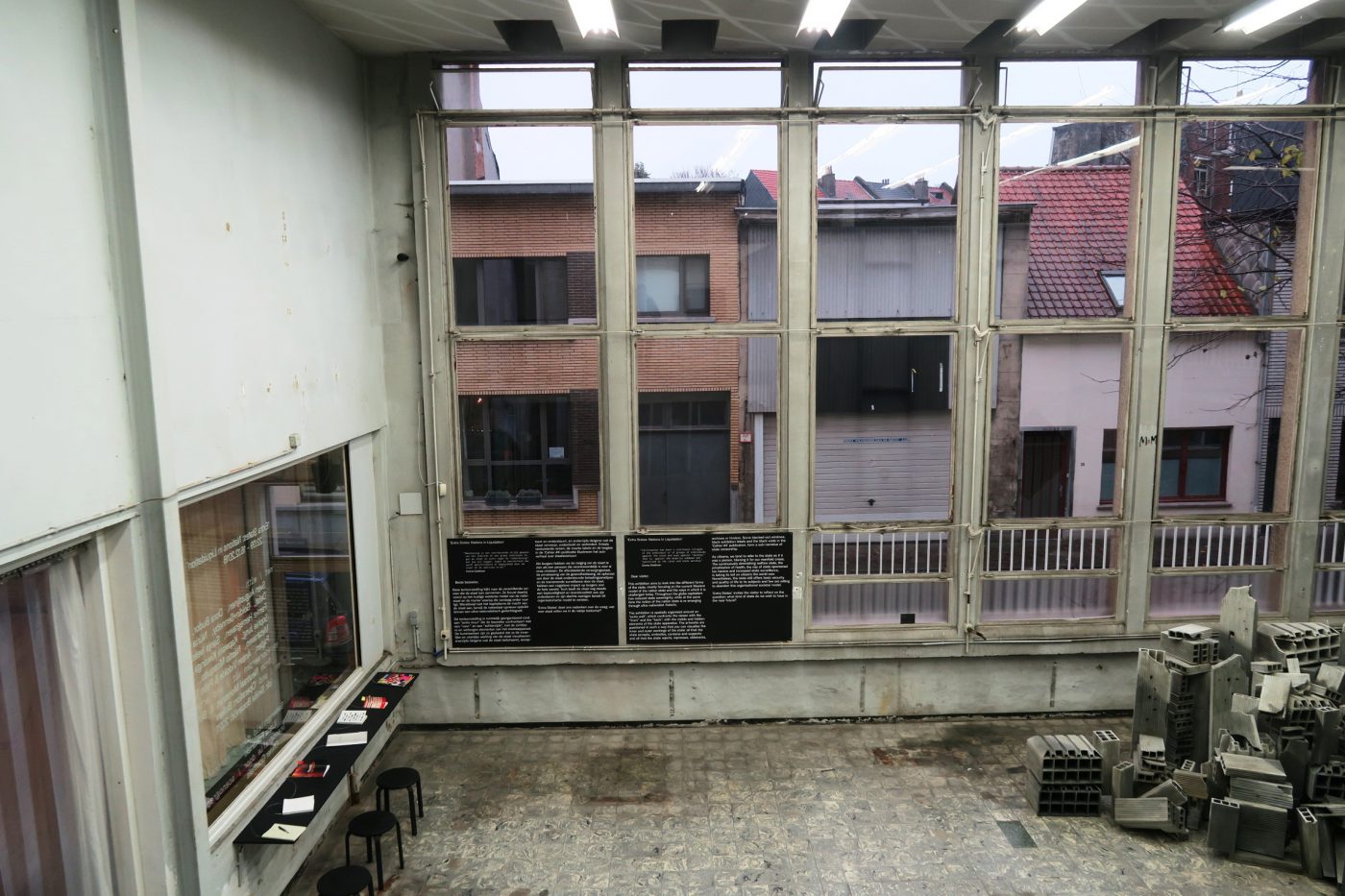
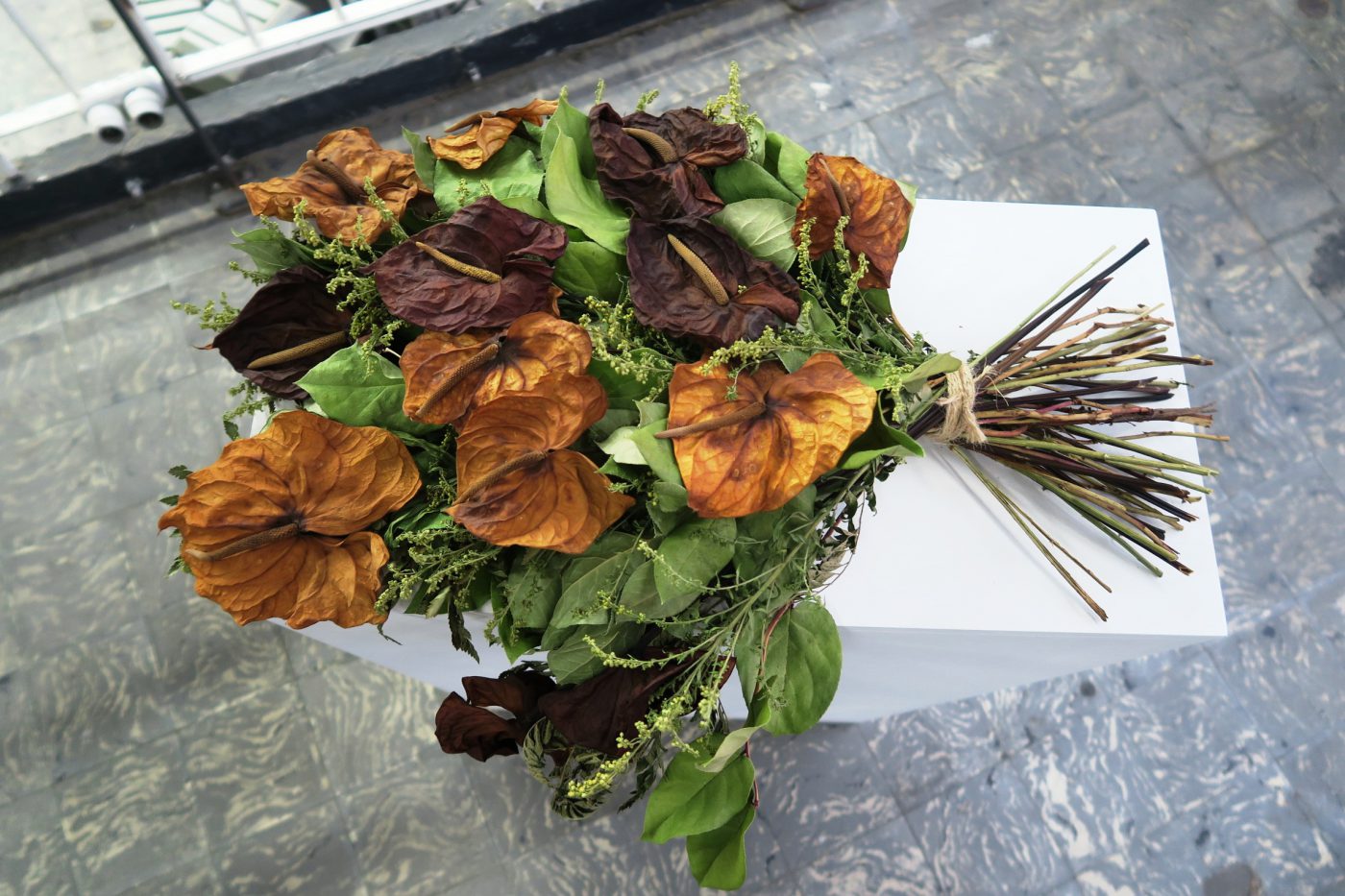
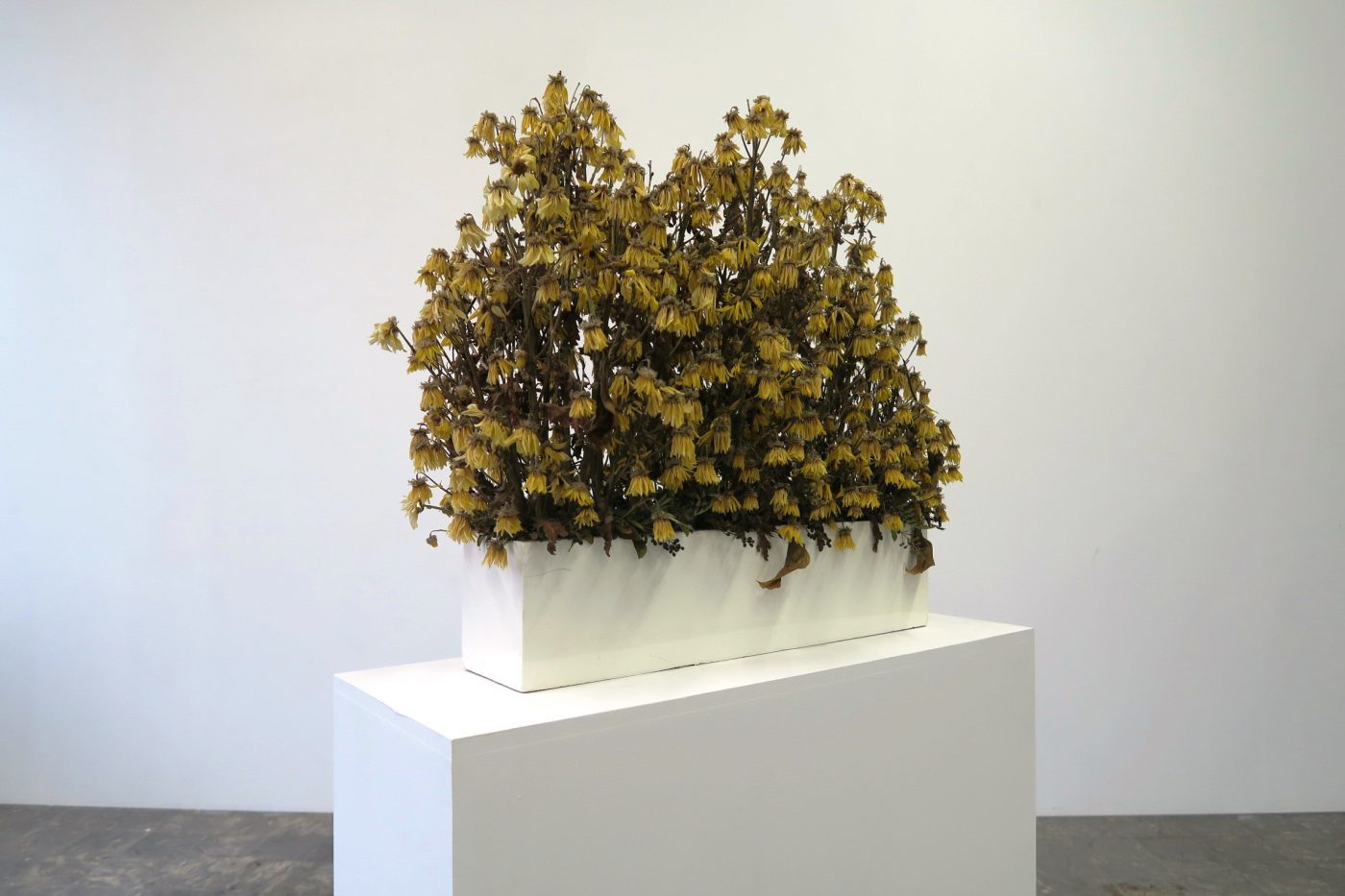
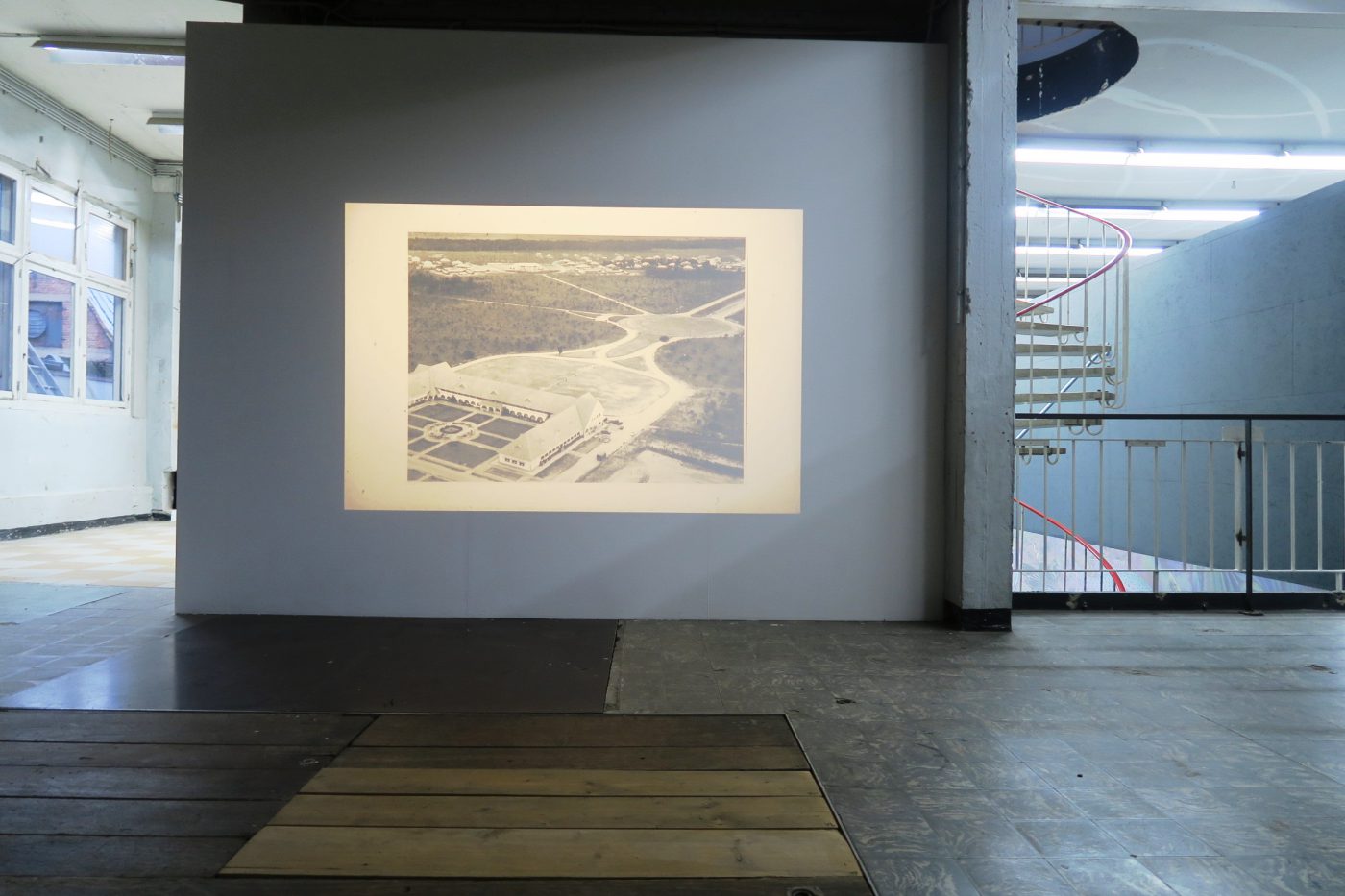
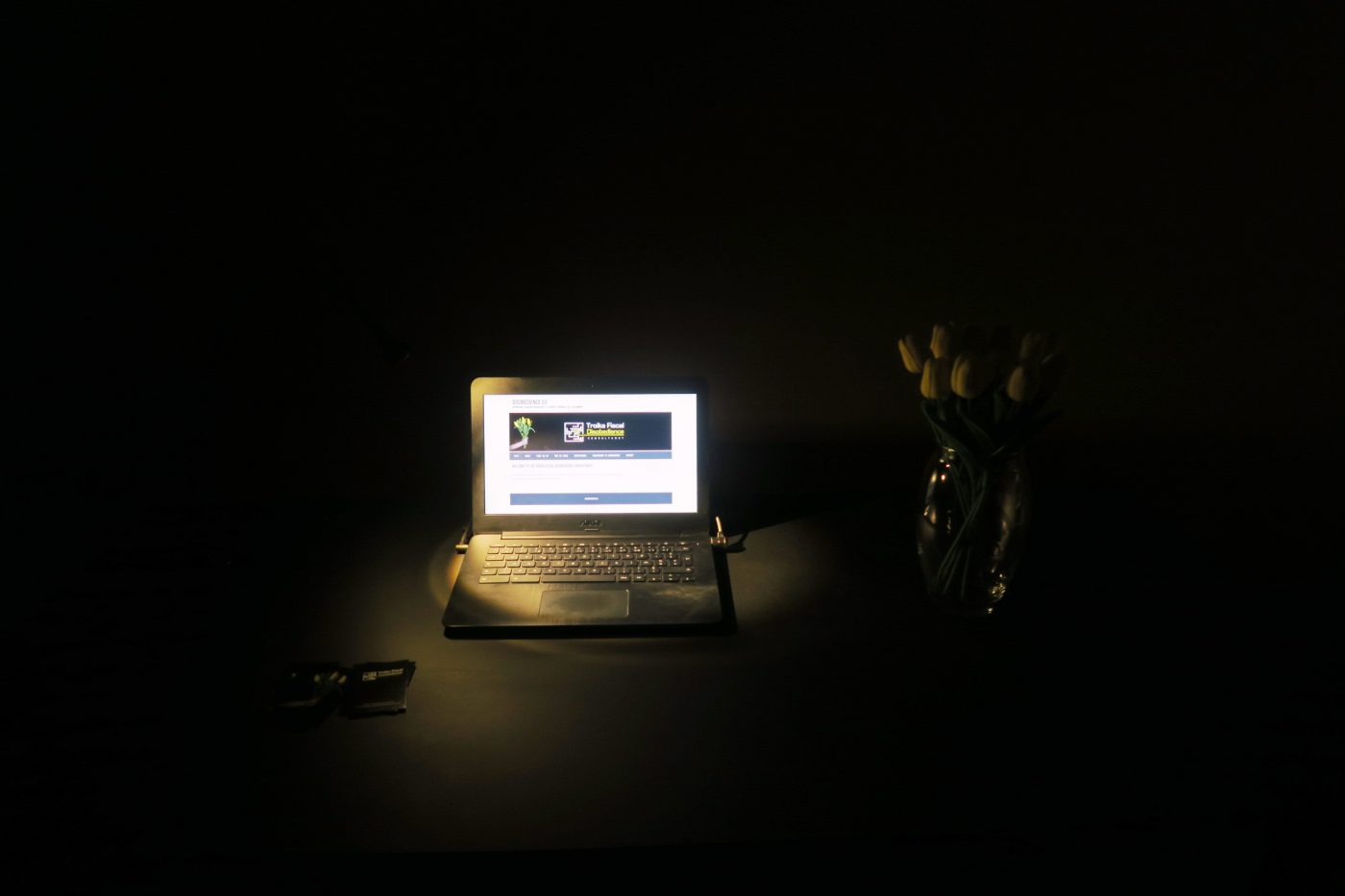
Extra States: Nations in Liquidation, Extra City, Antwerp, until 16.12.2018
With works by Sven Augustijnen, Dora Budor, Chto Delat, Núria Güell, Goldin+Senneby, Femke Herregraven, Sanja Iveković, Sophie Jung, Metahaven, Kapwani Kiwanga, Nástio Mosquito, Trevor Paglen, Anton Vidokle & Pelin Tan. Artefacts from Neutral Moresnet and Bulkes, with trailer of ‘Operation: Bulkes’ (dir. Siniša Bosančić, 2021). Scenography / spatial installation by Olivier Goethals
Herbert Ploegman


